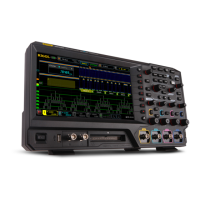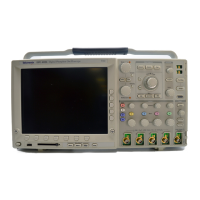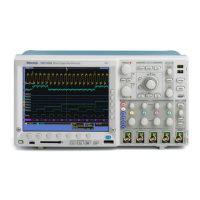Command Syntax
DISplay:COLor
:CURSor1 1;:CURSor2 5
(extra colon before CURSor2 ; use
DISplay:COLor:CURSor1 1;CURSor2 5 instead)
DISplay:STYl
e:NORMal;:*OPC
(colon before a star (*) command)
DISplay:COLor:CURSor1 1;COLor:CURSor2 5 (levels of the mnemonics
are differe
nt; e ither remove the second use of
COLor or place :DISplay: in
front of
COLor:CURSor2 5)
Terminating
This documentation uses <EOM> (End of message) to represent a mess age
terminato
r.
Table 2-4: End of Message Terminator
Symbol Meaning
<EOM>
Message terminator
The end-of-message terminator must be the END message (EOI asserted
concurrently with the last data byte). The last data byte may b e an ASCII linefeed
(LF) ch
aracter.
This instrument does not support ASCII LF only message termination. The
instr
ument always terminates outgoing messages with LF and EOI.
Constructed Mnemonics
Some
header mnemonics specify one of a range of mnemonics. For example,
a channel mnemonic can be CH1, CH2, CH3, ... through CH8. You use these
mnemonics in the command just as you do any other mnemonic. For exa mple,
there is a CH1:POSition command, and there is also a CH2:POSition command.
In the command descriptions, this list of choices is abbreviated as CH<x>.
Cursor Position
Mnemonics
When cursors are displayed, commands may specify which cursor of the pair to
use.
Table 2-5: Cursor Mnemonics
Symbol Meaning
CURSOR<x>
A cursor selector; <x> is either 1 or 2.
POSITION<x>
A cursor selector; <x> is either 1 or 2.
HPOS<x>
A cursor selector; <x> is either 1 or 2.
2-6 DSA/CSA/TDS8X00/B Series Programmer Manual

